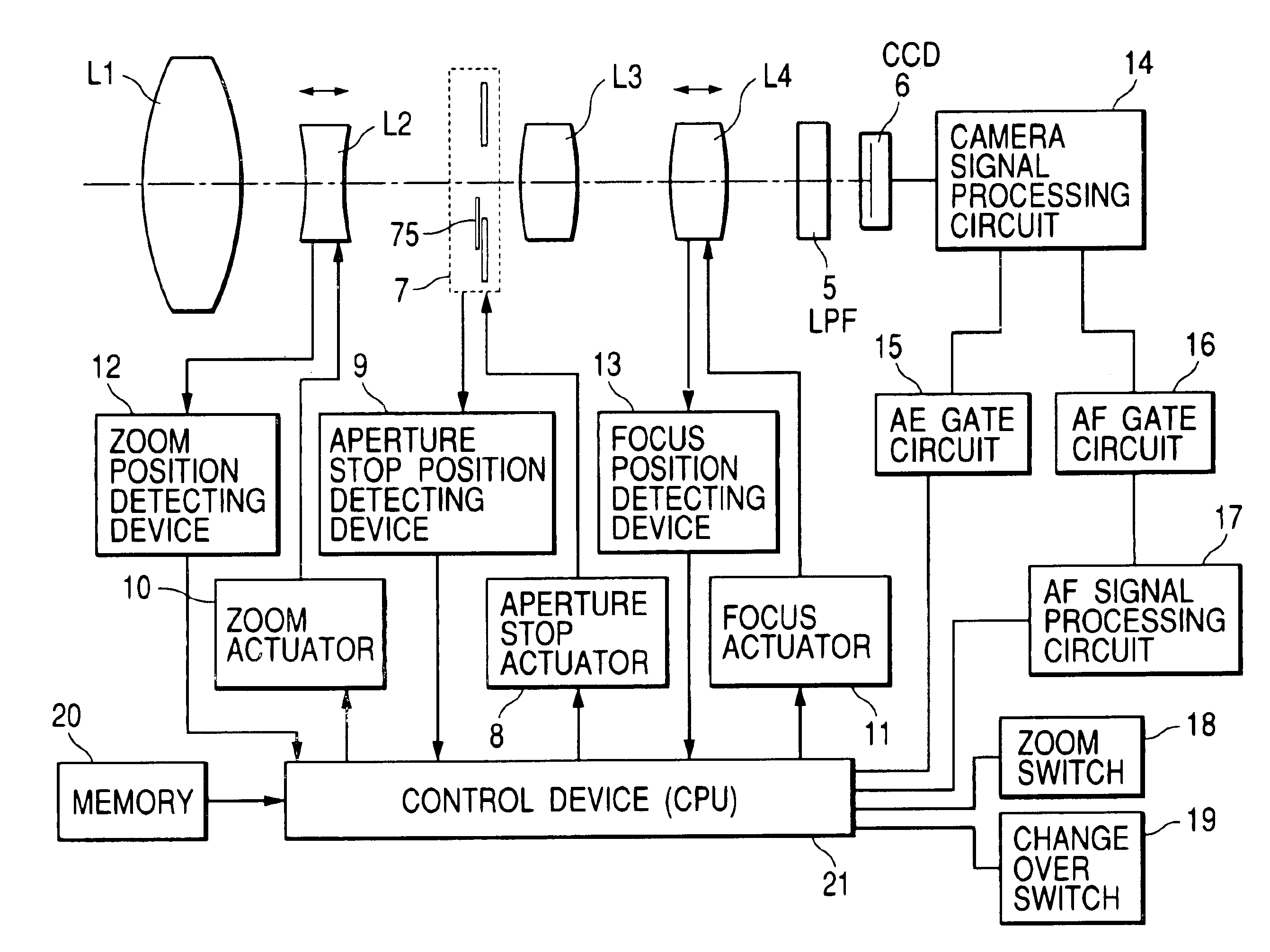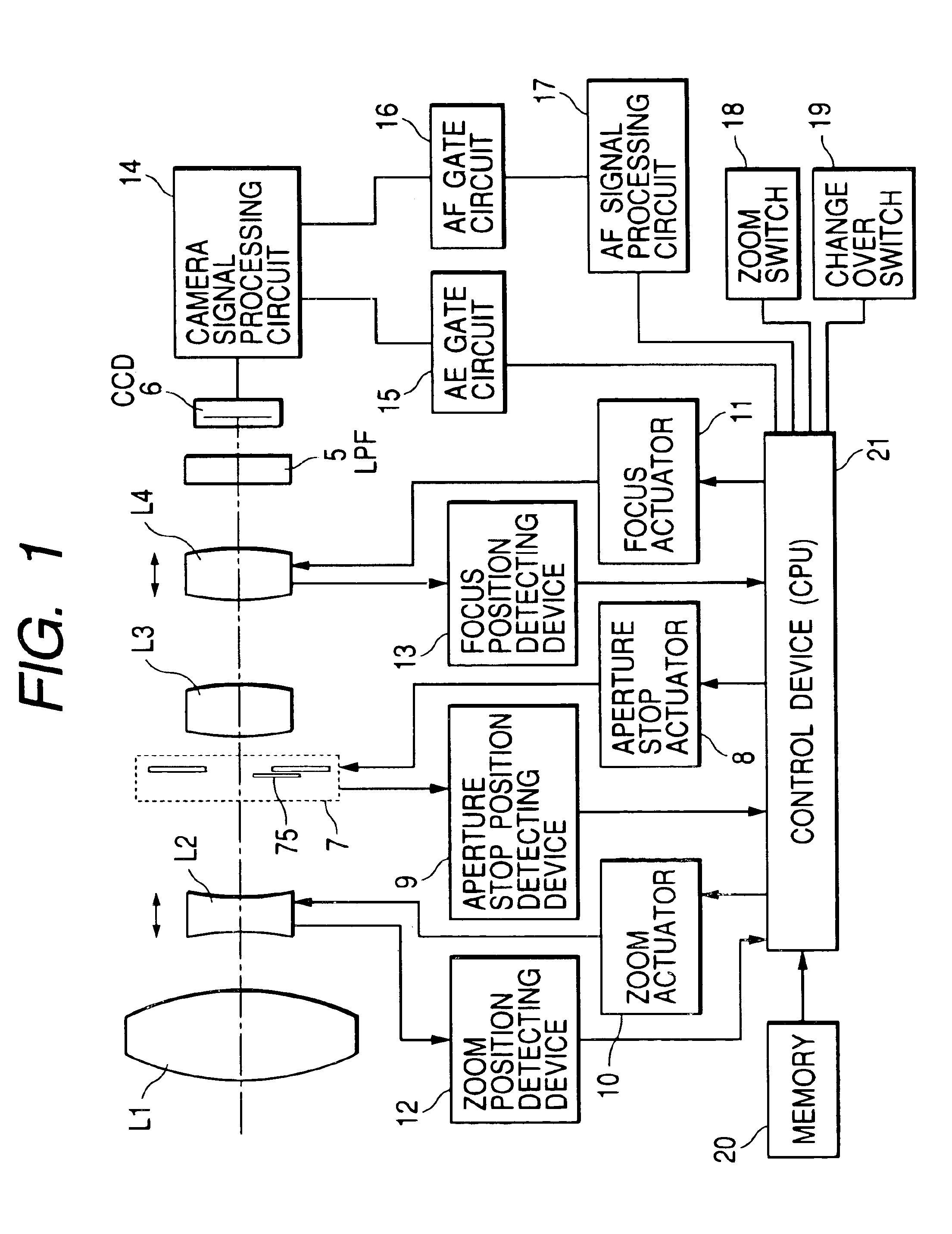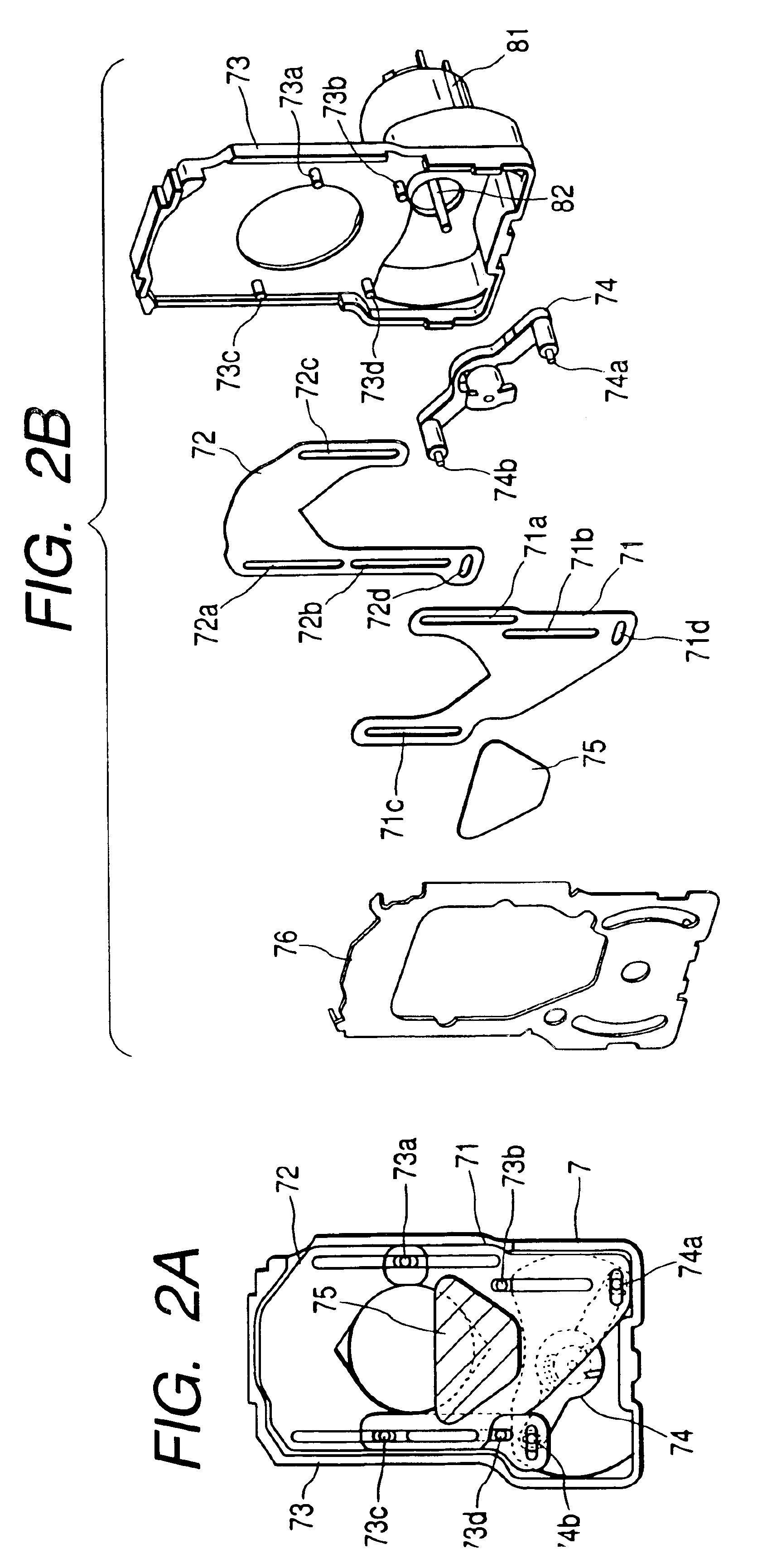Optical apparatus
a technology of optical equipment and filters, applied in the field of optical equipment, can solve the problems of affecting the optical performance of the image, affecting the image quality, and affecting the image taken due to the increase of focal depth, so as to reduce the thickness of the filter, the effect of reducing the influence of the filter to be inserted into the image taking optical system and reducing the deterioration of optical performan
- Summary
- Abstract
- Description
- Claims
- Application Information
AI Technical Summary
Benefits of technology
Problems solved by technology
Method used
Image
Examples
first embodiment
(First Embodiment)
[0053]FIG. 1 is a block diagram of an optical apparatus of first embodiment when applied to a video camera.
[0054]In FIG. 1, symbol L1 denotes a first group lens serving as a fixed convex lens, L2 denotes a concave variator lens for zooming (changing magnification of) an object, L3 denotes a third group lens serving as a fixed convex lens, L4 denotes a convex focus lens for correcting an image surface when zooming an object and adjusting a focus. An optical system is obtained by constituting a rear focus zoom lens (RFZ lens) by the above lenses. Symbol 5 denotes a low pass filter and 6 denotes a solid state image taking device such as a CCD or CMOS. The optical system of these RFZ lenses, members, and an aperture stop unit to be described later are housed in and held by a not illustrated fixed lens tube.
[0055]Symbol 7 denotes an aperture stop unit which is constituted by a galvanometer aperture stop actuator 8 for rotating a magnet rotor due to the voltage applied t...
second embodiment
(Second Embodiment)
[0088]FIG. 8 shows second embodiment of an optical apparatus of the present invention, which is a block diagram when applying the optical apparatus to a video camera and a member common to that in FIG. 1 is provided with the same symbol to omit duplicate description. This embodiment makes it possible to independently drive an ND driving unit 201 having an ND filter by a filter actuator 212 separately from an aperture stop unit 7 by setting the unit 201 after the unit 7 (image surface side of an optical system). In FIG. 8, symbol 211 denotes a position detecting device for detecting the entrance amount (position) of the ND filter (ND filter 204 shown in FIG. 9) into the optical path of the optical system, which is constituted by, for example, a Hall element. The ND filter is driven and controlled so as to enter the optical path by detecting luminous energy and relating the luminous energy to an aperture stop value so as not to be influenced by diffraction when the ...
third embodiment
(Third Embodiment)
[0113]FIGS. 13A and 13B show third embodiment of an optical apparatus of the present invention, which serves as an ND filter change unit of another embodiment of the ND driving unit shown by the block diagram in FIG. 8. Therefore, configurations other than the configuration of the ND filter change unit are the same as those in FIG. 8. FIGS. 13A and 13B are top views of an ND filter change unit which can be manually operated. The ND filter change unit is constituted separately from an aperture stop unit, independently driven, and set to the rear (image surface side) of the aperture stop unit.
[0114]In FIGS. 13A and 13B, symbols 301 and 320 denote filter frames to which ND filters 302 and 321 are bonded and fixed. The ND filers 302 and 321 are constituted so as be inserted into an optical path at shifted positions on the optical path. It is allowed that these ND filters have the same density or different densities and thicknesses of the filters are equal to or differe...
PUM
 Login to View More
Login to View More Abstract
Description
Claims
Application Information
 Login to View More
Login to View More - R&D
- Intellectual Property
- Life Sciences
- Materials
- Tech Scout
- Unparalleled Data Quality
- Higher Quality Content
- 60% Fewer Hallucinations
Browse by: Latest US Patents, China's latest patents, Technical Efficacy Thesaurus, Application Domain, Technology Topic, Popular Technical Reports.
© 2025 PatSnap. All rights reserved.Legal|Privacy policy|Modern Slavery Act Transparency Statement|Sitemap|About US| Contact US: help@patsnap.com



